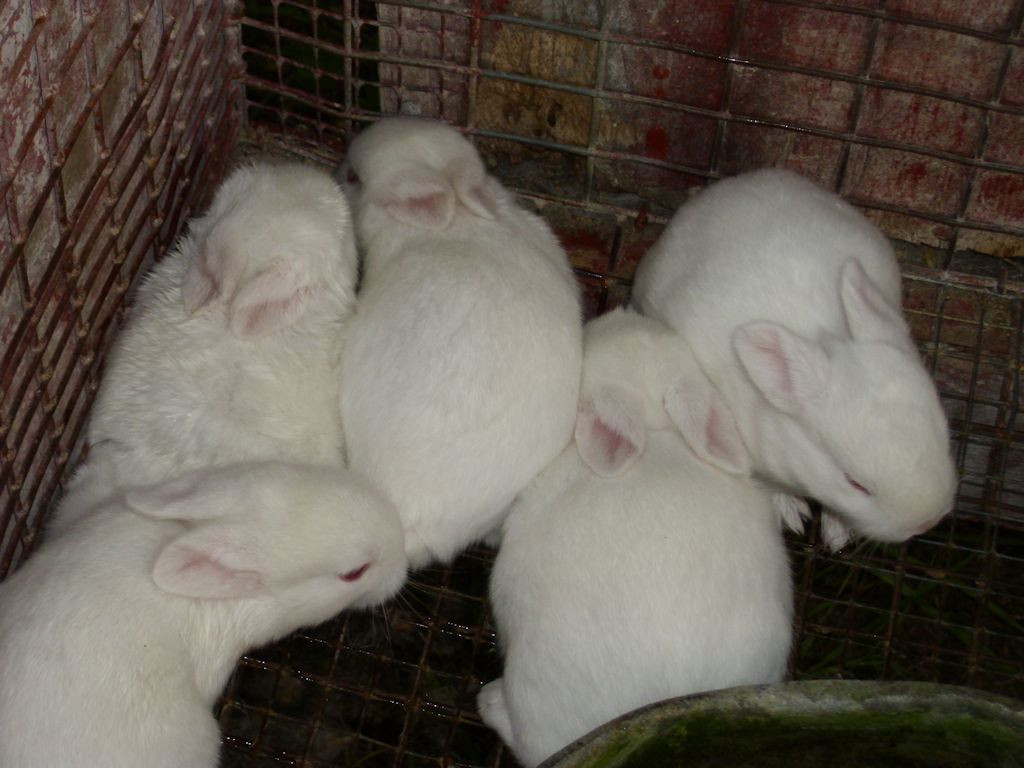The first set of kits have been growing like crazy. In fact, they have begun popping out of the nest box, which is why they’re now called poppers. Several times a day now I need to check the cage and put the poppers back into the nest box. They’re getting old enough to get out, but they aren’t really old enough to be out. It’s still possible to lose the kits at this point if they get too cool, wet, or simply aren’t able to get milk from mom.

In this case, all five of the white kits have gotten out of the nest box. Immediately after I took this picture, I put them back in because they aren’t able to get into the nest box on their own. Notice that their eyes are open and they have a full covering of fur, but the fur is so downy and light that it really doesn’t help keep the kits warm. In most cases, the kits simply huddle in the corner of the cage for warmth when they get out like this.
Eventually, the kits will be able to get in and out of the nest box by themselves. About the same time they’ll start to eat a little solid food. However, they won’t be weaned for at least a month and it’s absolutely essential to keep them where they can access mom quite easily.
Rabbits have a bicornuate duplex uterus, which consists of two completely separate uterine horns and no uterine body. Each horn has its own cervix and the two cervices combine into a single vagina. The reason that this deeply medical knowledge is required is that experience has shown that about half of the kits mature faster and are stronger than the other half. I’ve read everything I can find on the topic online and haven’t been able to figure out why except that one horn apparently provides a better environment than the other. The other half of the kits haven’t popped out of the nest box yet because they’re smaller and weaker than the kits you see in the picture.
For some odd reason, it’s also not unusual to find the kits separated into two piles at birth. Eventually they combine into a single group, but the two piles appear regularly when the kits are first born. An assumption on my part is that the kits in one horn are born first, followed by those in the second horn. Carefully watching the doe shows that the nest box typically contains some kits, she comes out to eat or simply to wait, and then she goes back into the nest box to have the remaining kits.
It would be nice to find out more about the birth process and why things happen as they do. If you have additional input about rabbit births, please feel free to contact me at [email protected].
